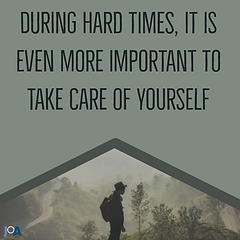Summer 2020 - Media Intern
The Journal of Adolescence is a psychology scientific journal. The media platforms, primarily Instagram, are used to disseminate the information from the articles featured in each issue to an audience of teens, parents, and other professionals working with children such as social workers and teachers. The goal of the posts is not to increase subscribers to the journal or to get website clicks. Rather, the main objective is to share the information in a clear and easily understandable way to the people who could benefit the most from the study findings.
I took on the role of Social Media Intern in June 2020, and upon completion of my position term in January 2022, I marked an increase of our Instagram following by 143%.
My Work
Cyber-Bullying
I ran a campaign to raise awareness about what constitutes cyber-bullying and what to do if you or an adolescent you care about is experiencing cyber-bullying. These were shared as 4 different posts.
Abstract
Introduction: Individuals who experience bullying victimization are at increased risk for future health and social problems. Despite this, studies show that not all bullying victims are in ill health, suggesting the importance of investigating protective factors that could counteract the adverse effects. The present study focused on investigating the moderating effects of emotional competence (EC) in the relationship between cyber-bullying victimization (CV) and mental health among adolescents.
Methods: Responses from 6403 adolescents aged 12 to 18 (1925 male, 4478 female, Mage = 16.35, SD = 1.46) with no missing data were used for analysis. The cross-sectional data analyzed in the present study was a part of a large longitudinal online survey conducted by the University of Tokyo in Japan. Participants were recruited among adolescent users of a social networking service widely used in Japan for communication.
Results: Results of regression analysis showed significant direct effects of CV on psychological distress/self-esteem, confirming the adverse effects of victimization. Results also suggested that high intrapersonal EC weakened the relationship between CV and psychological distress, whereas high interpersonal EC strengthened the relationship. There were no significant interactions between CV and EC in predicting self-esteem.
Conclusions: Intrapersonal and interpersonal EC may play differential moderating roles in the relationship between CV and psychological distress, the former by buffering the effect and the latter by exacerbating it. Interventions targeting abilities to handle one's own emotions may help decrease distress among adolescents with CV experiences.







In this digital age, cyber-bullying is becoming more prevalent. If you or your child is being cyber-bullied, they should get off of their device, talk to a trusted adult, seek support from friends and family, and get in touch with their emotions. If you are being bullied and want support, visit https://www.stompoubullying.o
rg/helpchat. If you are in crisis, please call the National Suicide Prevention Lifeline at 1-800-273-8255.
Resilience and Prospective Self
Abstract
Introduction: Early life adversity (ELA) can result in negative behavioral outcomes, including internalizing and externalizing problems. Evidence suggests that adolescence is a critical developmental period for processing ELA. Identity formation, which is crucial to this developmental period, may moderate the effect between ELA and these problems. One potential moderating variable associated with identity formation is the latent construct Prospective Self, comprised of future-oriented attitudes and behaviors.
Methods: Participants are from the first wave of an ongoing longitudinal study designed to characterize behavioral and cognitive correlates of risk behavior trajectories. A community sample of 10th and 12th grade adolescents (N = 2017, 55% female) were recruited from nine public school districts across eight Southeastern Michigan counties in the United States. Data were collected in schools during school hours or after school via self-report, computer-administered surveys. Structural equation modeling was utilized to assess Prospective Self as a latent construct and to evaluate the relationship between ELA, internalizing and externalizing problems, and Prospective Self.
Results: Preliminary findings indicated a satisfactory fit for the construct Prospective Self. The predicted negative associations between Prospective Self and internalizing and externalizing problems were found and evidence of moderation was observed for externalizing problems, such that the effects of ELA (i.e., childhood maltreatment) on externalizing problems were lower for individuals with higher levels of Prospective Self.
Conclusions: These results indicate that Prospective Self may play a role in supporting resilience against externalizing problems associated with ELA among adolescents.

How adolescents envision their future informs their decisions and, ultimately, their self-identity. The creation of a self to guide goals and positive decision making can increase resilience in adolescents when faced with adversity.
Self-Compassion
I ran the posts for this article in 2 different formats. The first version had a more traditionally feminine vibe to attract an audience that is more used to hearing these messages and accepting them. The second version was designed with a more masculine tone to try to deliver the message to an audience that is often more reluctant to take time to care for themselves due to societal expectations.
Abstract
Research on self-compassion and depressive symptoms is growing at an exponential pace. This systematic review provides an in-depth exploration of the relation between self-compassion and depressive symptoms in adolescents. In accordance with PRISMA guidelines, MEDLINE, CINAHL, and PsycINFO databases were systematically searched and 18 studies were identified. Results demonstrate the potentially pertinent role that self-compassion may play in the development, maintenance, and treatment of depression in adolescents, yet reflect on the paucity of research on this topic with respect to mechanisms of change. These studies further highlight how the impact of self-compassion may differ according to gender and age and underscore the need to account for other diversity-related variables, such as ethnic-racial group, socioeconomic status, and sexual orientation. Despite such limitations in the literature, the current findings extend research in adults by providing support for the relevance of self-compassion in adolescence, particularly with respect to the prevention of depressive symptoms.






It may feel hard to care for yourself, maintain a positive outlook, or continue to meet normal personal expectations. During these times of chaos and unrest, it is even more important to practice self-compassion, which consists of being kind to yourself, keeping a positive perspective, and practicing mindfulness. Self-compassion is associated with lower depressive symptoms and greater overall well-being. So, try to take time for yourself, remember that you are not alone in your challenges or struggles, and stay in touch with your thoughts and emotions.
Post Gallery



















